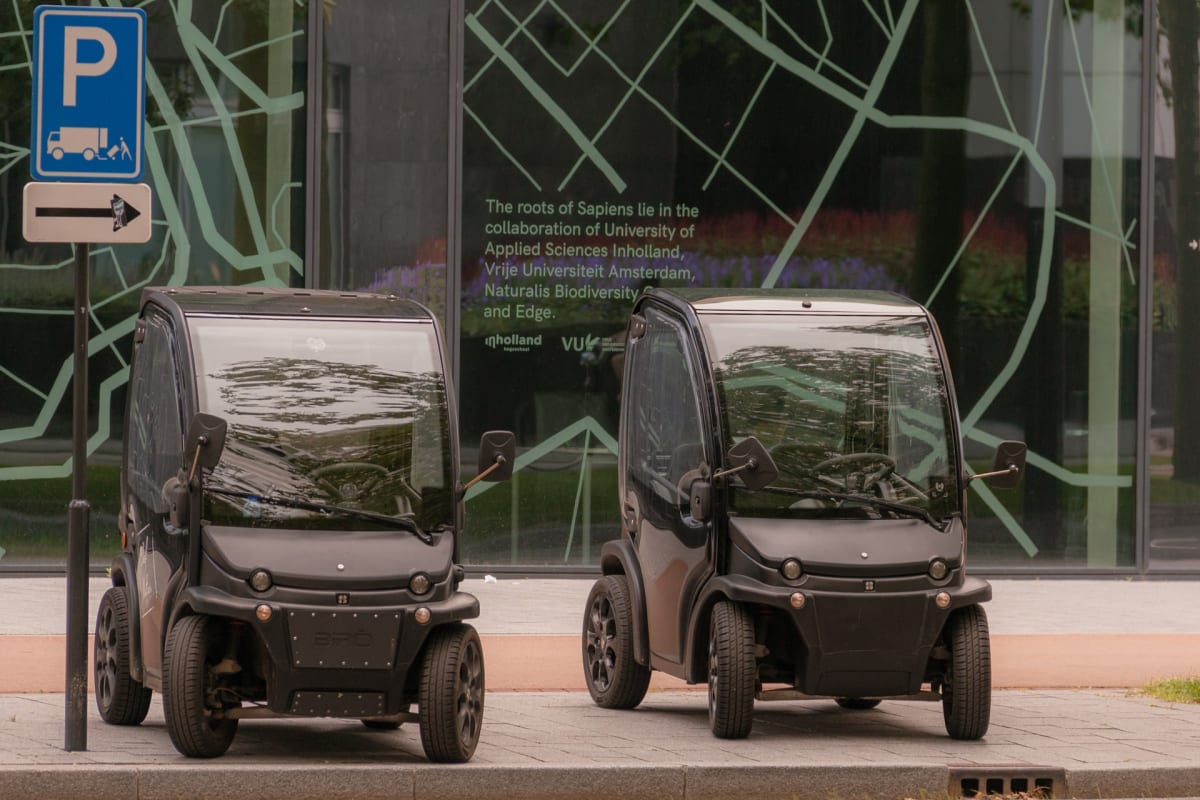
Comfortable Electric Tricycle Design for Cargo Transport
September 11, 2023
Choosing the Right Electric Tricycle: 5 Key Considerations
September 20, 2023Contents
- 1 Introduction
- 2 1. The Anatomy of Tricycles and Bicycles
- 3 2. Stability Matters
- 4 3. Balance Challenges
- 5 4. Center of Gravity
- 6 5. Maneuverability vs. Stability
- 7 6. Speed and Risk
- 8 7. Age and Skill Level
- 9 8. Terrain Matters
- 10 9. Visibility and Traffic
- 11 10. Environmental Considerations
- 12 Frequently Asked Questions (FAQs)
- 13 Conclusion
Introduction
In the world of wheeled wonders, bicycles have long been a symbol of freedom, mobility, and exercise. However, tricycles, with their three-wheel design, offer a different experience altogether. The question that often arises is, “Are tricycles safer than bicycles?” In this article, we delve into this query and explore various factors that contribute to the safety of both these modes of transportation. Buckle up (or rather, pedal on) as we navigate this informative journey.
1. The Anatomy of Tricycles and Bicycles
To understand their safety, let’s first break down the fundamental differences between tricycles and bicycles:
Tricycles
- Three wheels for stability
- Lower center of gravity
- Typically have a wider frame
- Usually come with a comfortable, upright seating position
Bicycles
- Two wheels for maneuverability
- Higher center of gravity
- Sleek and narrow frame
- Often require a forward-leaning posture
2. Stability Matters
One of the key factors to consider when evaluating safety is stability. Tricycles, with their three-wheel design, offer inherent stability that bicycles can’t match. The third wheel provides a solid base, reducing the risk of tipping over, especially for novice riders or those with balance issues.
3. Balance Challenges
Bicycles demand a higher level of balance and coordination from riders. This can be a significant hurdle for children learning to ride or adults who haven’t been on a bike in years. In contrast, tricycles eliminate this challenge, making them a safer option for those who struggle with balance.
4. Center of Gravity
The center of gravity plays a crucial role in stability. Tricycles have a lower center of gravity due to their design, making them less likely to topple over during turns or sudden stops. Bicycles, with their higher center of gravity, require riders to master the art of balance to stay upright.
5. Maneuverability vs. Stability
While tricycles offer stability, bicycles excel in maneuverability. Bicycles can navigate tight spaces and weave through traffic more efficiently than tricycles. However, this advantage comes with a trade-off, as it can increase the risk of accidents if not handled skillfully.
6. Speed and Risk
Bicycles tend to be faster than tricycles, which can lead to increased risks, especially in busy urban areas. The higher speed means riders must be more vigilant and skilled at handling unexpected obstacles.
7. Age and Skill Level
Age and skill level play a significant role in determining which option is safer. For children or those with limited biking experience, tricycles are generally the safer choice. However, experienced cyclists may prefer the agility of bicycles.
8. Terrain Matters
The type of terrain you’ll be riding on also influences safety. Tricycles perform better on flat surfaces, while bicycles are versatile and can handle various terrains. It’s essential to choose the right vehicle for your intended route.
9. Visibility and Traffic
Tricycles are often more visible to drivers due to their bulkier frame. However, cyclists must always follow traffic rules, use proper lighting, and wear reflective gear to enhance their visibility, regardless of their chosen ride.
10. Environmental Considerations
From an environmental standpoint, bicycles have the upper hand. They are more eco-friendly, producing zero emissions, and are an excellent choice for short commutes and reducing carbon footprints.
Frequently Asked Questions (FAQs)
Is riding a tricycle easier than a bicycle?
Yes, riding a tricycle is generally easier, especially for beginners or those with balance issues. The three-wheel design provides stability, reducing the risk of falls.
Can adults ride tricycles?
Absolutely! Tricycles are not just for kids. Many adults enjoy the comfort and stability of tricycles, especially for leisurely rides.
Are tricycles safer for seniors?
Tricycles can be an excellent option for seniors who want to stay active but may have mobility or balance challenges. They offer a safe and enjoyable way to explore the outdoors.
Are bicycles better for exercise?
Bicycles are excellent for cardiovascular exercise and building leg strength. Their maneuverability allows for a more intense workout compared to tricycles.
Can I use a tricycle for commuting?
While tricycles are not as fast as bicycles, they can be used for commuting short distances. They are an eco-friendly and stable choice for urban transportation.
Which is more suitable for long rides, tricycles, or bicycles?
For long-distance rides, bicycles are the preferred choice. Their speed and maneuverability make them ideal for covering more significant distances.
Conclusion
So, are tricycles safer than bicycles? The answer depends on various factors, including age, skill level, terrain, and personal preferences. Tricycles offer stability and ease of use, making them a safer choice for beginners and those with balance issues. On the other hand, bicycles provide agility and speed, making them a preferred option for experienced riders.


